

VULNERABILITY
Disable person
Women, Children and the physically and mentally, challenged are the main vulnerable groups in the district. Although, there are people in this group in the district, there are no special programmes or any concerted efforts at rehabilitating them and ensuring their equitable access to community resources and social facilities.
There are also no structures in place to ensure that they are not discriminated against on grounds of their vulnerability and that their rights are not taken for granted. Neither is there any institution to optimise their potentials for development. Apparently, the only source of hope for fair treatment rest on societal norms that frown on their being treated badly.
They also depend almost entirely on the benevolence of philanthropic individuals, groups and N.G.Os for material supports such as walking sticks (white canes), wheel chair etc. The District should therefore, as a matter of urgency, institute measures to help the vulnerable groups and the physically challenged in the district.
Development Projections
Forecasts and projections are critical in trying to assess future needs in the development planning process. It enables future populations to be better served with basic needs and infrastructural facilities. In this session, the current population in projected for the 4-year plan period, that is 2006 – 2009 as a basis for projecting facilities and services to be required in future.
Population Projection
According to the 2000 census, the population growth rate of the Dormaa Central Municipal is 2.1%. By the end of the plan implementation period, using model, the projected population of the district will be as indicated below:-
The underlying assumptions guiding these projections are:
(a) Birth and Death rates are constant
(b) Proportions of age-cohorts will remain constant.
(c) Net Migration will remain the same.
The formula used to calculate the projections is
Where:
Po is the population of the base year 2000
Pt is the population of the current year
r is the rate of population growth
t is the time frame.
NB: The 2000 census Municipal population figure of 150,299 was used as the base year figure for projections from 2006 – 2009. 2.1% is the growth rate.
GPRS II
This plan is prepared with the Ghana Poverty Reduction Strategy themes in mind and they are:
(i) Micro/District Economy
(ii) Production and Gainful Employment
(iii) Human Resource Development and Basic Services
(iv) Programme for the Vulnerable and Excluded
(v) Good Governance
These five main themes were examined at the district level and are each treated in turn in this report.
Major Revenue Sources
The finances for running of the District in terms of administration and social development are based mainly on its traditional sources of income. These included rates, lands, fees and fines and licences. The rates include basic and property rates. The rateable population includes adults of 18 to 70 years. Students are however exempted.
Basic Rate
It is an annual fixed rate levied on the adult population. The property rate, on the other hand, is levied on immovable properties. Licences are based on economic activities in the district. The fees are the charges or tolls paid by the users of the services provided by the Assembly. These include market tolls, lorry park etc. In addition to these, the Assembly receives transfers from the central Government and the Lands Commission.
Those from the central Government include the ceded revenue, the Common Fund and wages and salaries of local government staff at the assembly. The Assembly also benefits from funds from non-governmental organizations such as CWSA; VIP and USAID (QUIPS) on various projects. Finally, there are transfers from the Lands Commission to the Assembly being the Assembly’s share of lands revenue collected form stool lands in the District by the Commission.
Characteristics of District Revenue Sources
This section discusses the characteristics of the revenue sources in terms of their yield/output, growth and stability. Taxi instability disturbs financial planning since that could throw the budget into disarray. Statistics indicates that the tax yields are fairly stable. This is attributable to the relatively stable nature of the taxes for example lands. Further analysis, revealed that the recorded instabilities in certain main sources reveal poor collection performance.
Administration of Revenue
The administration of revenue at the Assembly is of vital importance. The success or failure of the Assembly to perform in terms of fund depends upon the effectiveness and efficiency of the Revenue Administration to generate the required income. The billing and collection effort by the Assembly has not lived up to expectation. A critical look must thus be taken into its administrative machinery and structure.
The organisation for revenue mobilisation is solely the responsibility of the Chief Revenue Superintendent with technical support form the DPCU; DFO and the DCD.
The Assembly employs two means to collect its revenue:
• Its own staff (21 of them) that collects property rates and some few other specific revenue items.
• Other people who are contracted to collect the revenue on commission basis (34 in number).
Different methods are employed in revenue collection. The collection could be daily monthly, quarterly or yearly basis depending on the revenue item concerned. Revenue collection is on daily basis for the lorry park and market tolls. Licences are mostly items, which are collected on monthly basis. Property and basic rates is done on annual basis.
In any revenue collecting institution, monitoring should form an important aspect of the system if it is to achieve its set targets. The Assembly, like such other institutions, has a means of monitoring its revenue collection. The system provides for the following set-ups: DCE; DCD; DFO; DPCU; CRS and Finance and Administration Sub-Committee. Another major problem is the failure of some collectors to submit their books for checking by officer who need them for monitoring purposes.
The effects of poor monitoring and enforcement are reflected in the performance of revenue collection. Presently, the Assembly collects about 70% of her total estimated revenue. This implies that about 30% of estimated revenues are bad liability at the end of the fiscal year.
Financial Resource Allocation
Resource allocation is an important aspect of the budget preparation, which usually starts after the Ministry of finance has released the budget guidelines. The resource allocation or the expenditure budget is divided into two, the recurrent and the capital. The recurrent expenditures are usually allocated on departmental basis.
The recurrent expenses is made up of the following items:
- Personal emoluments
- Travelling and Transport
- General Expenditure
- Maintenance, Repairs and Renewals
- Miscellaneous
The capital or development expenditure, on the other hand is broken down into the following headings:
- Constructional works
- Vehicles, Plants and Equipment
A critical analysis of the Assembly’s budget statement over the past years reveals that resource allocations are usually in favour of recurrent expenditures. By implication, the budget suffers instability with a negative impact on development.
Monitoring and Control of Expenditure
Monitoring and control of expenditure involves the assurance to management that expenditure shall achieve the purpose to which it is intended as expressed in the approved annual budget. There must also be assurance that the cash inflow can finance the expenditure without pushing the organisation to borrow from the capital market, which could be expensive. In the District, Monitoring and Control of expenditure is undertaken by the DCE; DCD; DFO; Finance and However, monitoring and control of expenditure is fraught with some improprieties:
- the absence of effective instant audit over most expenditures;
- absence of relevant copies of invoices/bills to support expenditure items;
Economic Development
The Dormaa District’s economy can be well described as an agrarian economy. This is because about 56% of its labour force is engaged in Agriculture. This figure has reduced from the 1996 figure of 57.9% implying that Agriculture has been shedding labour to the other sectors. However, it must be stated that because of the comparative advantage which the district has in agriculture, a lot more of the population of the district are engaged in agriculture as a minor or secondary occupation.
According to the Ministry of Food and Agriculture (MOFA) well above 70% of the population are engaged in agriculture with about 90% of the overall income of the indigenous population come from this sector. The next sector in the district identified to be the second employer and engaging about 19 percent of the people is the service sector. This comprises of people engaged in Teaching Public Services, Transport and Communication Services, Buying
and selling. In 1996, this sector was employing 18.4 percent of the people and this has increased over the years. With improved trade along the border and the migration of people into Dormaa, one would have expected this sector to have even employed more people.
Employment in industry accounts for 15.5%. It is made up of people employed in the wood processing (saw milling and furniture), dressmaking, leather works, cassava-processing brick and tile, Pottery and metal works. Despite the presence of electricity in the urban areas of the district, industrial activities are still low. Industry is the least in terms of employment.
Apart from agriculture, greater proportion of the people employed in the other sectors can be located in the urban settlements such Dormaa Ahenkro, Wamfie, Wamanafo and Nkrankwanta. Further analysis also indicates that the unemployed accounts for 7.1 percent representing the average figure for both urban and rural areas of the district. About 6.2 percent of the unemployed live in the urban areas and 0.9 percent in the rural areas. This calls for intervention in the form of creating the enabling environment for the youth especially to get access to employment. Again, advantage must be taken of the presence of electricity to establish more agro-based industries, which can offer more employment especially in the agriculture and industrial sectors.
Average Sector Income
The annual average household income for the sampled population is 648754. However, the various sector annual average income indicates that the highest sector income is from Industry with Agriculture having the lowest.
Poverty Trends in the District
The World Bank’s approach to measuring levels of poverty is adopted in this report. According to this approach two lines of poverty were identified namely:
a. the “poverty line’ – subsisting on less than two-thirds of average income; and
b. the ‘hard core poverty line’ – subsisting on less than one-third of average income.
According to this definition, populations within the hardcore poverty line are deprived and need special attention. The annual average household income of the district is ¢648,754 which is below the national average income per head of ¢3,200,000 or $400 (The State of the Ghanaian Economy 2000 edition) at current official rate of ¢8000. Hence our two lines of poverty for the district based on district household average annual income are ¢432,502 and ¢216,251 respectively. The households affected in this way are 30.6 percent and 11.3 percent respectively
Considering the Economy Dependency Ratio of 1:0.8 as in table above, it means that every ten workers have 8 non-workers to take care of. This will be considered to be favourable. However, considering the district’s income levels of 648754 per annum, the dependency ratio is high as it is below the national average of ¢3,200,000 0r $400.
Specialisation and Comparative Advantage
Specialisation in the Agriculture sector can be observed in three main areas namely:
(a) Poultry Production
At the moment the poultry industry, specifically, table egg, production is operating at the mega-scale levels. Poultry production in the District is the largest in the region Table 9 indicate the large-scale poultry farms and the number of birds.
Dormaa Municipal offers plenty of potential for foreign investors, ranging from agriculture and manufacturing through mining, quarrying and construction to forestry and tourism. Agriculture is the main economic activity in the district whose soil tends to support both food and cash crops. The main food crops that thrive well in Dormaa Central Municipality are maize, rice, cocoyam, cassava and plantain.
The district is capable of significantly increasing its supply of cassava chips, which is a major export food item. Other cash crops that are well-supported by the Municipality soil are cocoa, coffee, oil palm, citrus, cola and cashew. Private entrepreneurs can take advantage of the abundant availability of land in the Municipality and produce these cash crops for export.
Although vast arable land exists, with flexible land tenure system, mechanised farming is yet to be introduced and developed, and private investors would profit immensely, if they should take up such modern farming techniques. Poultry farm and animal husbandry is on the increase in the Municipality.
This is dominated by cattle-rearing and home-bred goats and sheep, but there are lots of potential for large scale operations in this field. The Municipal Assembly has earmarked part of its share of the District Assemblies Common Fund for lending to farmers, who are confronted with problems in obtaining credit from the formal sector.
The Assembly also has an Agricultural Sub-Committee to advise on matters pertaining to the development of the agricultural sector in the district. Although industrial activity in the Dormaa Central Municipal still carried out mainly on a small-scale, the expansion of the manufacturing sector remains a priority for the Municipality.
Already, there is a foundation for large-scale and small-scale industries in such areas as body cream manufacturing, carpentry, saw milling, soap-making, baking, cassava processing, palm oil extraction, tie-dye, fitting and general mechanical works, which exist in the Municipality and so the existing skills acquired could be tapped and developed by any investor.
Furthermore, investors can transform the various agriculture products in the municipality into processed products. For instance palm fruits can be converted into cooking oil and soap, while the palm tree could be used to produce palm wine used to distil local gin. Cassava can be converted into gari, a local staple food, cassava chips, glue, livestock feed, etc.
Production cost would be competitively low and the production and distribution process very efficient due to the presence of first class roads, telecommunication system and commercial banking facilities in the district. Surface mining is another great potential in the district yet to be harnessed.
The Birimain rock formation, which covers more than three quarters of the Municipal, contains all the mineral deposits exported from the country. Gold deposits exist in the district at Asunu No. 1, Pamu-Berekum forest reserve, Kofiasua, Dormaa, Akwamu, Aboabo, Asikasu, Nsuhia and Koraso. These are yet to be exploited.
There are also several clay deposits in and around Dormaa Ahenkro, Amaasu and Wamfie, which can be exploited for the manufacture of burnt bricks. Low technology is still used in the production process, creating opportunities for investors with more efficient production process.
Investment can also be made in the production of roofing tiles in the district, another good opportunity for entrepreneurs. Indeed real estate development in the municipality is very lucrative and a local vocational training school, Dormaa Vocational Training Centre, turns out skilled artisans in the areas of masonry, plumbing, carpentry and electrical installation.
With forest reserves covering some 612.064 square kilometres, there is plenty of trees with high economic value for the lumber industry. These include Papao Asanfina, Odum, Ofram, Wawa, Emire, Mahogany, Utile, Edinam, Bonsamdua, Kokrodua, Kyenkyen and Hyedua. Only two small saw mills are in operatio, and so a lot of timber felled is exported outside the municipality.
The Municipal Assembly is, therefore, highly interested in attracting investors willing to set up local saw mills. Also, investors interested in timber felling are needed, as long as they can produce proof of reforestation plans and other plans relating to the environment to guide and control their operations.
The Municipal Assembly also seeks investors, local and foreign NGOs, companies and individuals of goodwill to assist in joint ventureship with beneficiary committees and the Assembly itself to provide improved school buildings. The emphasis placed on education by the Assembly is illustrated by the fact that the Assembly commits, on the average, about 60% of its development budget to improving education infrastructure.
Dormaa Municipal offers plenty of potential for foreign investors, ranging from agriculture and manufacturing through mining, quarrying and construction to forestry and tourism. Agriculture is the main economic activity in the district whose soil tends to support both food and cash crops. The main food crops that thrive well in Dormaa Central Municipality are maize, rice, cocoyam, cassava and plantain.
The district is capable of significantly increasing its supply of cassava chips, which is a major export food item. Other cash crops that are well-supported by the Municipality soil are cocoa, coffee, oil palm, citrus, cola and cashew. Private entrepreneurs can take advantage of the abundant availability of land in the Municipality and produce these cash crops for export.
Although vast arable land exists, with flexible land tenure system, mechanised farming is yet to be introduced and developed, and private investors would profit immensely, if they should take up such modern farming techniques. Poultry farm and animal husbandry is on the increase in the Municipality.
This is dominated by cattle-rearing and home-bred goats and sheep, but there are lots of potential for large scale operations in this field. The Municipal Assembly has earmarked part of its share of the District Assemblies Common Fund for lending to farmers, who are confronted with problems in obtaining credit from the formal sector.
The Assembly also has an Agricultural Sub-Committee to advise on matters pertaining to the development of the agricultural sector in the district. Although industrial activity in the Dormaa Central Municipal still carried out mainly on a small-scale, the expansion of the manufacturing sector remains a priority for the Municipality.
Already, there is a foundation for large-scale and small-scale industries in such areas as body cream manufacturing, carpentry, saw milling, soap-making, baking, cassava processing, palm oil extraction, tie-dye, fitting and general mechanical works, which exist in the Municipality and so the existing skills acquired could be tapped and developed by any investor.
Furthermore, investors can transform the various agriculture products in the municipality into processed products. For instance palm fruits can be converted into cooking oil and soap, while the palm tree could be used to produce palm wine used to distil local gin. Cassava can be converted into gari, a local staple food, cassava chips, glue, livestock feed, etc.
Production cost would be competitively low and the production and distribution process very efficient due to the presence of first class roads, telecommunication system and commercial banking facilities in the district. Surface mining is another great potential in the district yet to be harnessed.
The Birimain rock formation, which covers more than three quarters of the Municipal, contains all the mineral deposits exported from the country. Gold deposits exist in the district at Asunu No. 1, Pamu-Berekum forest reserve, Kofiasua, Dormaa, Akwamu, Aboabo, Asikasu, Nsuhia and Koraso. These are yet to be exploited.
There are also several clay deposits in and around Dormaa Ahenkro, Amaasu and Wamfie, which can be exploited for the manufacture of burnt bricks. Low technology is still used in the production process, creating opportunities for investors with more efficient production process.
Investment can also be made in the production of roofing tiles in the district, another good opportunity for entrepreneurs. Indeed real estate development in the municipality is very lucrative and a local vocational training school, Dormaa Vocational Training Centre, turns out skilled artisans in the areas of masonry, plumbing, carpentry and electrical installation.
With forest reserves covering some 612.064 square kilometres, there is plenty of trees with high economic value for the lumber industry. These include Papao Asanfina, Odum, Ofram, Wawa, Emire, Mahogany, Utile, Edinam, Bonsamdua, Kokrodua, Kyenkyen and Hyedua. Only two small saw mills are in operatio, and so a lot of timber felled is exported outside the municipality.
The Municipal Assembly is, therefore, highly interested in attracting investors willing to set up local saw mills. Also, investors interested in timber felling are needed, as long as they can produce proof of reforestation plans and other plans relating to the environment to guide and control their operations.
The Municipal Assembly also seeks investors, local and foreign NGOs, companies and individuals of goodwill to assist in joint ventureship with beneficiary committees and the Assembly itself to provide improved school buildings. The emphasis placed on education by the Assembly is illustrated by the fact that the Assembly commits, on the average, about 60% of its development budget to improving education infrastructure.
Date Created : 11/16/2017 2:01:34 AM


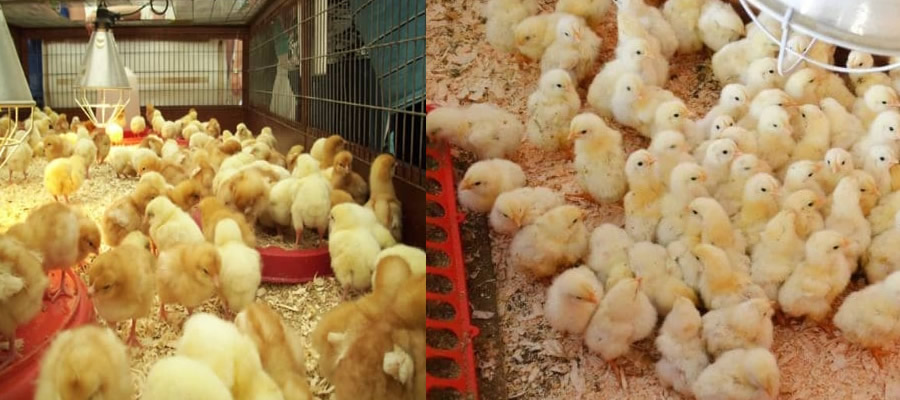
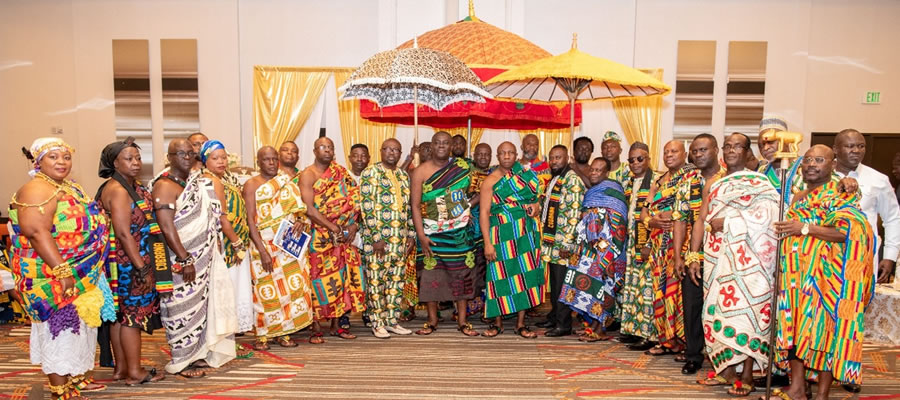

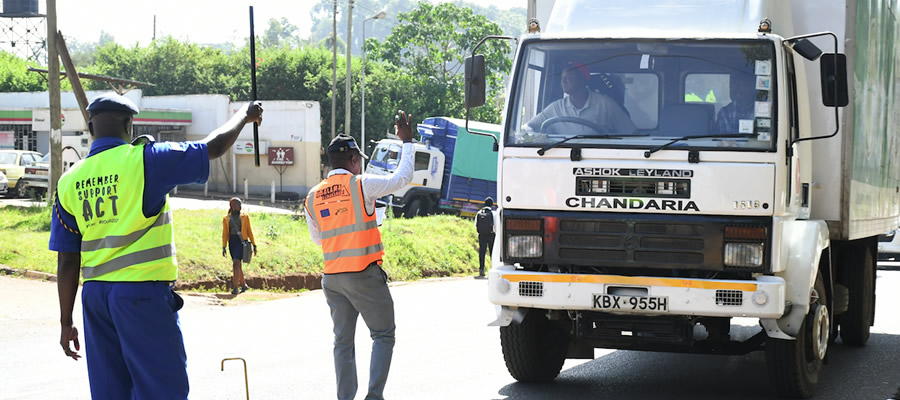
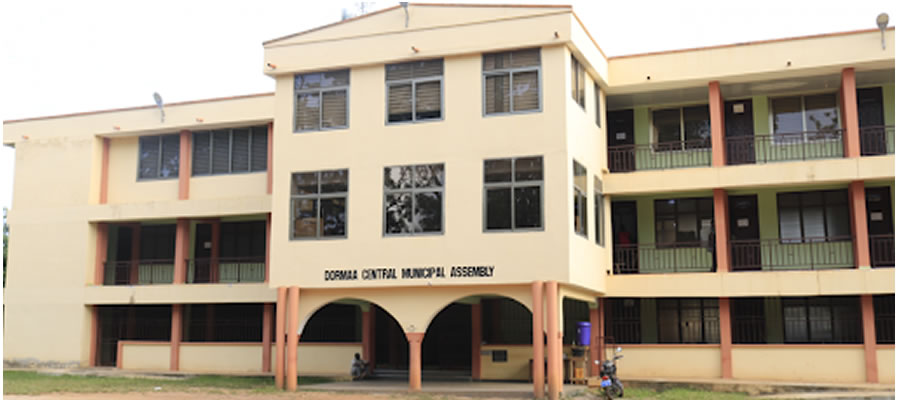


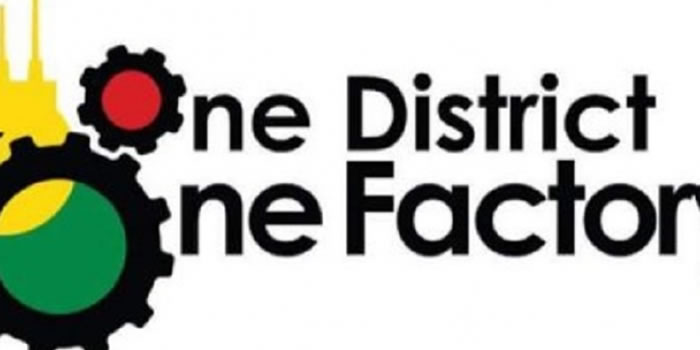


 facebook
facebook
 twitter
twitter
 Youtube
Youtube
 +233 593 831 280
+233 593 831 280 0800 430 430
0800 430 430 GPS: GE-231-4383
GPS: GE-231-4383 info@ghanadistricts.com
info@ghanadistricts.com Box GP1044, Accra, Ghana
Box GP1044, Accra, Ghana